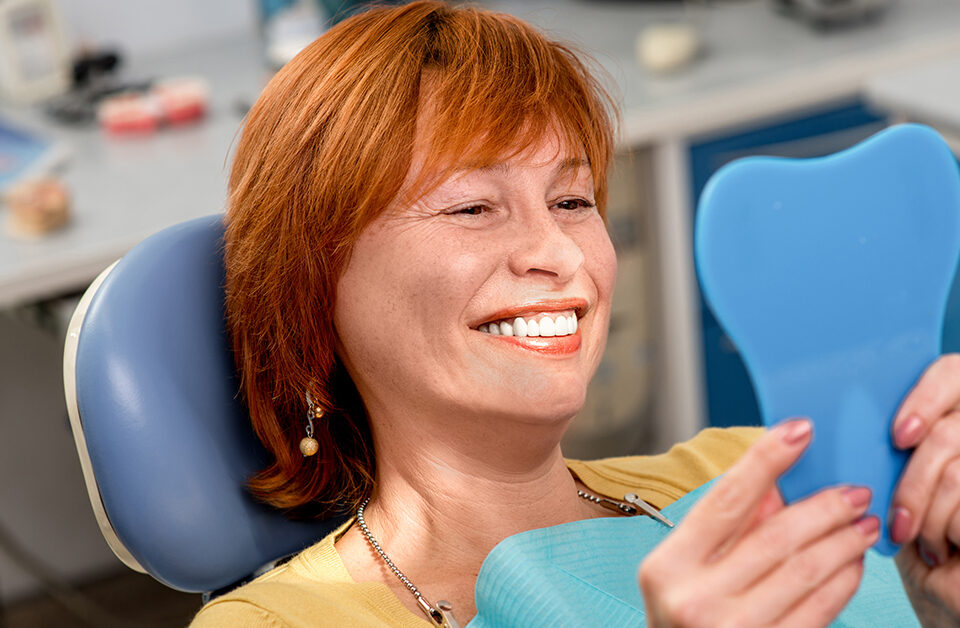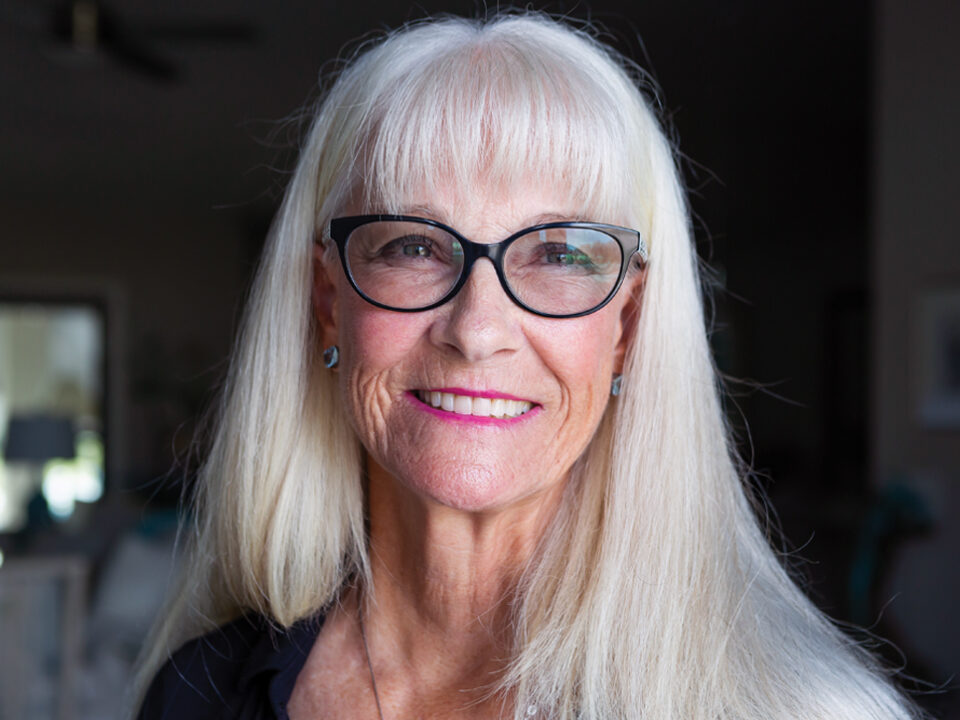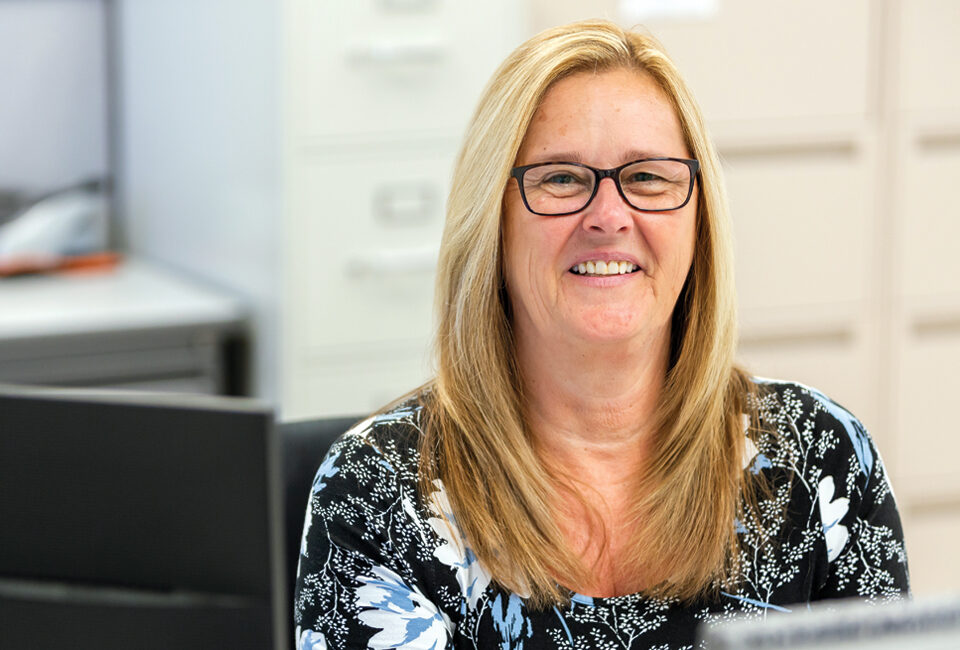It’s one thing to buy a new pair of shoes, a new dress or even a new sofa on a whim. But a new home? In a state thousands of miles away from where you live?
That’s a whole different level of impulse buying, but it’s the level that Michelle Arterton and her husband went to a few years ago.


Jordan Pysz / ifoundmydoctor.com
“We were vacationing here in Florida, and a friend who lives in Maple Leaf Golf and Country Club invited us over for a visit,” Michelle relates. “We were actually thinking of renting a place there for a few months in the winter, and while we were visiting my husband said, Why don’t we go look at the model homes?
“Well, the first one we walked into, we both loved. He said to me, You really like this one? I said, I do, and just like that we bought it on the spot. A couple of days later on the plane ride home, we said, What did we just do? We bought a house in Florida, and we’re not even retired yet. My husband said, Don’t worry, we’ll figure it all out.”
In time, Michelle and her husband did just that. After they sold their home in Massachusetts, Michelle quit her job and her husband sold his share of the body shop he owned to his business partner. The couple then spent the next four years snowbirding between a home in Maine and their new home in Florida.
The couple celebrated their first full year as Florida residents in August 2020, according to Michelle, and by her third full year was flashing a bright new smile that came courtesy of Joseph H. Farag, DMD, of Port Charlotte Dental Care. It’s a smile she had long wanted but, unlike her Florida home, was slow to commit to.
“I had been missing an upper left molar for a while and had another tooth that was a bit shaky,” Michelle explains. “It was actually a crown that was put on when I was living in Massachusetts, and it had been giving me some problems. It had fallen off a couple of times, and I was worried it might happen again.
“My dentist in Massachusetts glued the crown back on, but I was afraid to bite into anything like an apple or even a sandwich because it was loose, and I didn’t want it to break off again. When I first went to see Dr. Farag, he offered to fix that tooth and the one I was missing, but I said, Let me think about it.”
What are My Options
Michelle first visited Dr. Farag in 2019, shortly before she and her husband became permanent residents of the Sunshine State. She mulled over Dr. Farag’s offer for almost a year. Finally, after making the move to Florida, she saw Dr. Farag again and asked him about the options for repairing her teeth.


One option involved replacing the missing tooth with a dental implant, a screw-like post placed in the jaw to serve as the root of a replacement tooth. Michelle wasn’t too keen on that idea, in part because it takes a few months for implants to fuse with the jawbone and become strong enough to support the crown.
She was more interested in a second option, one that called for a complete restoration of her upper arch, which had other issues, according to Dr. Farag.
“She had some new cavities as well as a fracture in a tooth where a root canal had been done many years ago,” Dr. Farag details. “That fractured tooth, her right lateral incisor, was split and there was no restoring it, so she said, Well, we might as well just fix everything.”
To meet that objective, Dr. Farag created two bridges: one to replace the missing molar and another to replace the fractured incisor, which needed to be extracted. Several failing crowns also required restoration.
Dr. Farag began the project in May 2020, when he created a healthy periodontal foundation by cleaning Michelle’s gums. He then used a 3D scanner to create a digital model from which the restoration pieces were created.
“We start that process by doing a diagnostic wax-up, which is basically a mock-up with the lab technician,” Dr. Farag educates. “This is all done digitally, and we go through a couple of iterations on the computer to see what we like best.
“Once we’re happy with the color, size and shape, we give the lab the final go-ahead to prepare temporary teeth. In Michelle’s case, we started by creating a temporary bridge that she wore for a few months while the site of the extraction healed.”
Something New
After healing from the extraction, Michelle returned and Dr. Farag began work on the teeth that needed new crowns. He determined that all but two of the teeth that had previously been crowned needed to be redone.
Depending on the tooth and color desired, a variety of materials, including lithium disilicate and zirconia, can be used to create crowns. In all cases, though, the new crowns are monolithic, meaning they are formed from a single block of material. That creates several natural advantages over older crowns made of porcelain fused to metal. For starters, monolithic crowns are stronger. They are also more aesthetically pleasing with no metal collar at the top.
“These new materials also mimic the enamel translucency of natural teeth because they allow light to transfer in and out of the tooth,” Dr. Farag notes. “And people like that because it looks more like a real tooth, even close up.
“With the old porcelain-fused-to-metal crowns, your teeth might look good from far away. But if you get up close, you start to notice that there’s something different about them. They don’t look as real or as good.”
Michelle was initially fit with temporary crowns and a temporary bridge that filled the gap created by her missing molar. After a couple of weeks, she returned and was fit with permanent crowns and bridges that were adjusted to her liking.
Michelle now has a restored upper arch that is aesthetically appealing and provides greater function when eating and chewing.
“I love to smile, but it had been a while since I really felt confident about smiling,” Michelle says. “It had been years, really. But I smile all the time now because my teeth look great. And I can eat anything I want and not have to worry about a tooth breaking.
“Dr. Farag did a great job, and he’s so nice. Now I go back to him for regular cleanings and checkups. I’m thrilled with what he’s done for me. I really appreciate his work, and I gladly recommend him to anyone. He’s a great dentist, the best.”
Comfortable Solution
Somewhere between Illinois and Florida, there’s a Goldilocks climate that’s not too cold in the winter and not too hot in the summer, a place Mike Foley would consider ideal to live. He just hasn’t found it yet.
Mike worked as a firefighter in his native Chicago for 34 years. When he retired a few years ago, Mike and his wife moved to Florida. It didn’t take long for Mike to sour on the Sunshine State.
“My wife likes the weather, but if it were up to me, I’d be long gone from here,” Mike says. “It’s way too hot for me. But Chicago is way too cold. What I remember most about being a fireman up there is freezing like a Popsicle®.”
During Mike’s ice age, he let something go a bit too long. It was a serious dental issue that he finally addressed soon after making the move south.
“I’ve had real bad crowding of my lower front four teeth all my life,” Mike details. “As I got older, those teeth also became loose, which was a bit of a problem. Because I couldn’t really bite into anything normally, I would always cut up my food into smaller pieces and chew it in the back of my mouth. When you’ve got a problem, sometimes you just adapt.”
Eventually, Mike went for a general cleaning from Dr. Farag. It was then that he learned the cause and extent of the issues he had long ignored.
“The dentist told me I’d be wasting my time with the cleaning because I had bad gum disease,” Mike remembers. “He said that was why my teeth were loose, and I needed to take care of that before we did anything else.”
LANAP Procedure
While evaluating Mike’s case, Dr. Farag explained that he could correct the gum disease with a treatment called LANAP, which stands for laser-assisted new attachment procedure. In addition to healing ailing gum tissue, LANAP can improve the quality and density of the jawbone. In some cases, it can even spark the generation of new bone.
“Using the LANAP procedure, we are able to treat a patient’s entire mouth in about two hours,” Dr. Farag explains. “During that time, we make three passes with the laser and clean, disinfect and sanitize the gums without cutting anything open.”
During the first pass, Dr. Farag details, the energy from the laser kills all bacteria in the gums, vaporizes the diseased gum tissue and dehydrates tartar on the teeth, which makes the tartar brittle and easy to remove.
During the second pass, the tartar is removed with a fine-tipped, vibrating, ultrasonic instrument, and the teeth are rinsed with an antimicrobial substance that halts bacteria growth. The diseased lining of the tissue is removed, and the bone surrounding the teeth is debrided of infected tissue.
During the final pass, an antimicrobial seal is created that prevents reinfection and releases growth factors from blood cells that help regenerate the attachment between the gums and teeth.
“The patient doesn’t have any sensation of what we’re doing because we use a local dental anesthetic, just as if we’re doing a filling,” Dr. Farag says. “That’s how patients stay comfortable during the process. And there’s no postop discomfort because we’re not traumatizing anything. The gums are not inflamed, so they’re not painful.”
Afterward, the patient is asked to briefly stay on a soft-food diet to prevent tearing of the new tissue, the dentist points out.
One reason Dr. Farag recommended the LANAP treatment was because he hoped it would allow Mike to retain his loose lower front teeth. However, Dr. Farag later discovered that the damage to the jawbone holding those teeth was too extensive.
“Because of the severity of the periodontal disease, Mike had lost about 90 percent of the bone in that lower front area,” Dr. Farag confirms. “That’s why his teeth were so loose and why we eventually had to extract them.”
Replacement Plan
To replace the extracted teeth, Dr. Farag recommended a plan to use two dental implants as the foundation for a fixed four-tooth bridge that would restore proper function and greatly enhance the aesthetics of Mike’s smile.
The replacement teeth can be a crown cemented or screwed onto the abutment, a partial bridge that can be affixed to one or more implants, or a full denture that can be fastened to a series of implants.
Prior to seating an implant, some patients require a bone graft designed to enhance the volume of the jawbone. By using autologous bone or a synthetic bone substitute, the graft gives the jawbone the strength to support an implant.
Bone grafts are not always necessary, but for patients who have been missing teeth for many years, they are often required because bone mass deteriorates when there is no pressure from chewing to stimulate natural bone regeneration.
Mike had suffered a great deal of bone loss in the lower front area of his mouth, but Dr. Farag was able to avoid a bone graft by using a 3D planning platform called X-Guide® to determine the precise placement and size of the implants.
“The lower teeth are pretty small in diameter and there wasn’t much bone left, but the X-Guide system allowed us to get the right diameter implants and place them in the sockets of what bone we had left to work with,” Dr. Farag reports.
“That’s the great advantage of the X-Guide system. It allows us to do all the planning virtually on a computer, where we can see exactly how the implants will line up with the opposing jawbone and teeth that we’re keeping.”
Smile With Pride
The final phase of Mike’s treatment plan was the placement of the implants and the creation of a bridge. After wearing a temporary bridge that allowed the implants to fuse properly with the jawbone, Mike was fit with a permanent bridge.
Mike now has a smile he’s proud of and lower teeth that are strong enough to bite into any sandwich, apple or corn cob. Not surprisingly, he says the work Dr. Farag did has made his life better and easier.
“I can eat anything I want, and I don’t need to cut everything up before I eat it, which is really nice,” he says. “And my teeth look great. Those lower four teeth aren’t crowded anymore the way they used to be. They look perfect.
“Dr. Farag did a great job, and there was no pain. I was a little worried about that because I’d heard some horror stories about what happens when you have gum treatment, but the LANAP procedure went just fine.
“I definitely made the right choice going to see Dr. Farag because he’s got all the right tools a dentist needs to do things right. And he’s a good guy, no nonsense. I gladly recommend him to anyone. In fact, I already have.”











